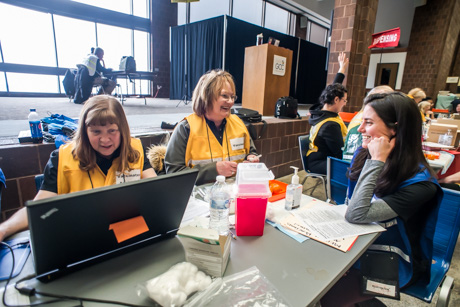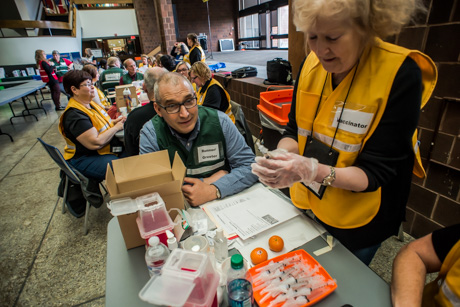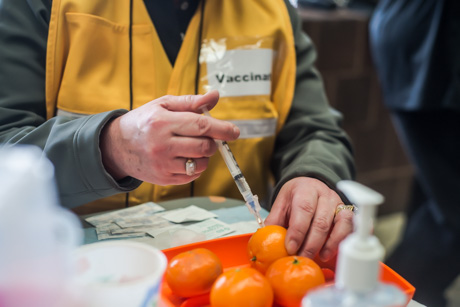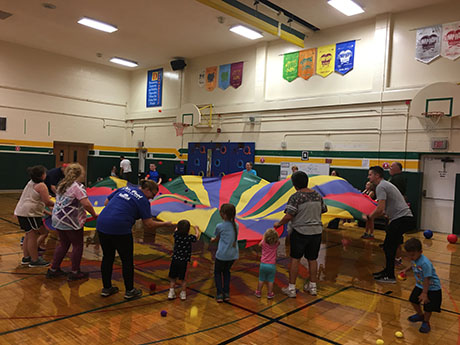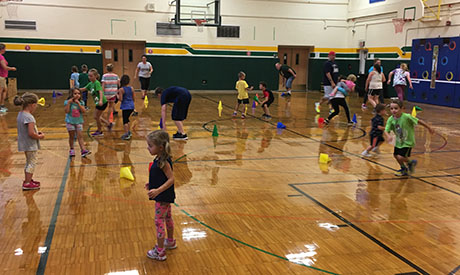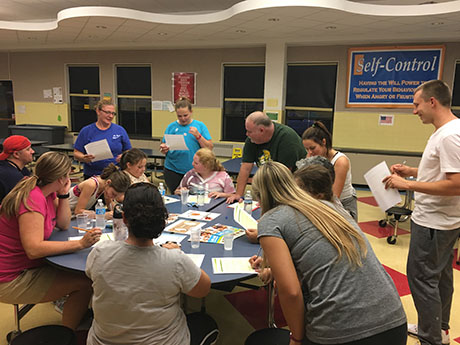Public Health Column from the Genesee County Health Department:
Do you know that mammals, including humans, can contract rabies? Bats, raccoons, foxes and skunks are assumed to be infected with this deadly virus and must be avoided. In any case with animals, it is better to love your own and leave others alone!
What is rabies? How is it transmitted? What are Signs & Symptoms?
Rabies is a virus that attacks the nervous system of mammals, ultimately causing disease in the brain and death. There are more than 4,000 different species of mammals, all of which are vertebrates (they have a backbone or spine), are endothermic (“warm-blooded”), have hair on their bodies, and produce milk to feed their babies.
Transmission of the rabies virus usually begins when the saliva of an infected host is passed to an uninfected mammal. The most common way rabies is transmitted is through the bite and virus-containing saliva of an infected host. Other routes include contamination of mucous membranes (i.e., eyes, nose, mouth), aerosol transmission, and organ transplantations.
The first symptoms of rabies may be very similar to those of the flu including general weakness or discomfort, fever or headache. These symptoms may last for days. There may also be discomfort or a prickling or itching sensation at the bite site, progressing within days to symptoms of cerebral (brain) dysfunction, anxiety, confusion, agitation.
As the disease progresses, the person may experience delirium, abnormal behavior, hallucinations and insomnia. Common signs of rabies in animals are; nocturnal (night) animals active during daylight, foaming of the mouth, overly aggressive, or uncoordinated. The acute period of disease typically ends after 2 to 10 days. Once clinical signs of rabies appear, the disease is nearly always fatal, and treatment is typically supportive.
What to do if potentially exposed to rabies?
“If you are bitten, or if infectious material (such as saliva) from a wild or stray animal gets into your eyes, nose, mouth, or a cut, wash the area with soap/water and call your doctor or local County Health Department immediately. Please note that bats have very tiny, razor-sharp teeth so you may not feel or see a bite mark,” said Sarah Balduf, director of Environmental Health for Genesee & Orleans Counties.
IT IS EXTREMELY IMPORTANT to safely capture the suspect animal if it has or may have been in contact with people, pets or livestock so it can be tested for rabies. Capturing the suspect animal for testing is important because unnecessary medical treatment to people and confinement of pets or livestock may be avoidable.
“To diagnosis the rabies virus in animals testing the tissue of the brain is needed. Keep this in mind when capturing the animal because damage to the head/brain can cause it to be untestable. If treatment is recommended, it consists of a series of four shots, over a period of 14 days. An additional fifth dose of rabies vaccine is given on day 28 to immunocompromised patients (less capable of battling infections),” Balduf said.
*A link to a video on how to safely capture a bat is located below.
How do you to prevent rabies?
Rabies is 100-percent preventable! Here are some ways to protect your families and animals.
· Don't feed, touch or adopt wild animals, stray dogs or cats, including the babies.
· Be sure your pet dogs, cats and ferrets as well as horses and valuable livestock animals are up-to-date on their rabies vaccinations. Vaccination protects pets if they are exposed to rabid animals. Pets too young to be vaccinated (under 3 months old) should be kept indoors and allowed outside only under direct observation. Keep family pets indoors at night. Do not leave them outside unattended or let them roam free.
· Do not attract wild animals to your home or yard. Keep your property free of stored bird seed or other foods that may attract wild animals. Feed pets indoors. Tightly cap or put away garbage cans. Board up any openings to your attic, basement, porch or garage. Cap your chimney with screens. Bats can get in spaces as small as the width of a pencil.
· If nuisance wild animals are living in parts of your home, consult with a nuisance wildlife control expert about having them removed. You can find wildlife control experts, who work on a fee-for-service basis, in your telephone directory under pest control.
· Teach children not to touch any animal they do not know and to tell an adult immediately if they are bitten by any animal.
· If a wild animal is on your property, let it wander away. Bring children and pets indoors and alert neighbors who are outside. You may contact a nuisance wildlife control expert who will remove the animal for a fee.
Upcoming Dog, Cat and Ferret Anti-Rabies Vaccination Clinics:
Clinics are free to county residents -- charges may apply for out of county residents.
Donations are appreciated -- for complete details visit the county health department’s website.
Genesee County Clinics are held on Thursdays from 4 - 7 p.m.:
- Aug. 17th, Genesee County Fairgrounds, 5031 E. Main St., Batavia
- Sept. 21st, Pembroke Highway Department, 1145 Main Road (Route 5), Pembroke
- Oct. 19th, Le Roy Village Highway Garage, 58 N. Main St., Le Roy
For more information on rabies, how to catch a bat safely, and much more visit, https://www.health.ny.gov/diseases/communicable/zoonoses/rabies/
For information about Health Department services contact,

